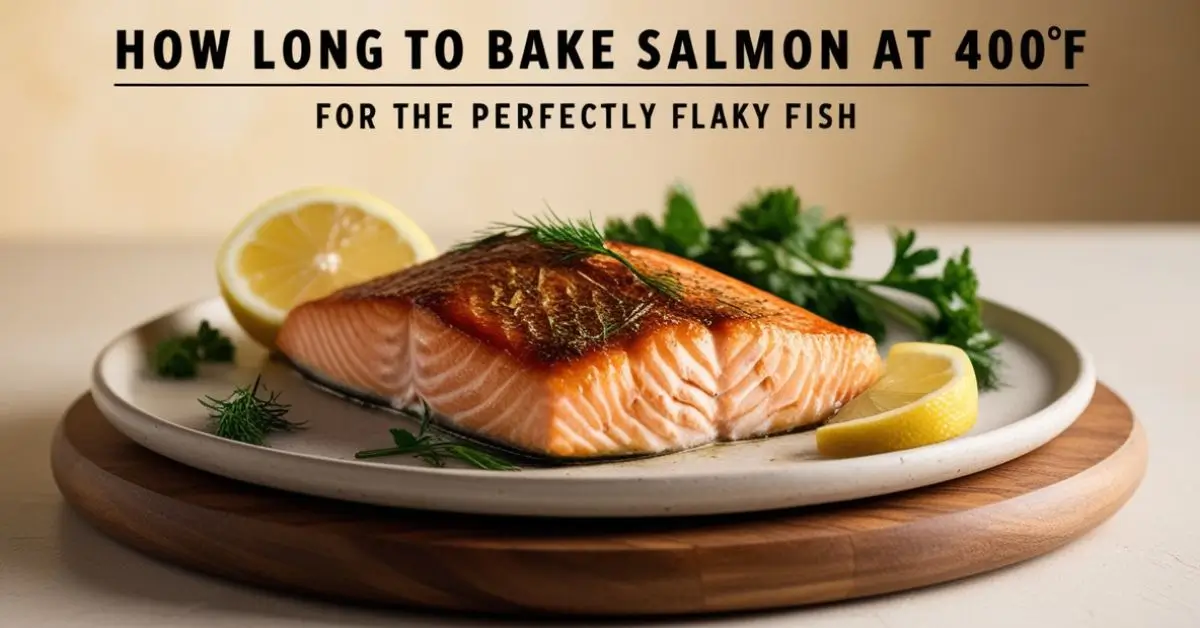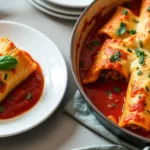Salmon is a beloved fish for its rich flavor, tender texture, and numerous health benefits. When baked correctly, salmon can be a tender, flavorful dish that retains its moisture and provides a burst of nutrients. One of the most popular methods for preparing salmon is to bake it at 400°F (200°C), which is considered a moderate-to-high temperature that cooks the fish quickly while allowing the flavors to develop. This guide explores everything you need to know about baking salmon at 400°F, from timing and seasoning to tips and recipe ideas.
Why Bake Salmon at 400°F?
Baking salmon at 400°F allows for a well-balanced combination of tenderness and flavor. At this temperature:
- The fish cooks relatively quickly, which prevents it from drying out.
- The higher temperature helps caramelize the exterior, giving it a slightly crispy texture.
- Baking at 400°F allows for a nice, even cook that maintains the fish’s moisture and delicate flavor.
Preparing Your Salmon for Baking
Before diving into the cooking process, it’s important to prepare your salmon properly. Follow these steps for the best results:
- Choosing the Right Cut: Salmon comes in various cuts, including fillets, steaks, and whole sides. Fillets are the most commonly baked, but any cut will work.
- Seasoning and Marinating: Salmon is highly versatile and pairs well with a variety of seasonings. A simple salt and pepper rub with olive oil works beautifully, or you can marinate the fish for 30 minutes with lemon, herbs, garlic, or honey for added flavor.
- Bringing to Room Temperature: Allow the salmon to sit at room temperature for 10–15 minutes before baking. This ensures even cooking and prevents cold spots in the fish.
- Using a Baking Dish or Sheet: Salmon can be baked on a baking sheet lined with parchment paper or in a glass or ceramic baking dish. Lining the baking dish with parchment or foil makes for easy cleanup and prevents sticking.
How Long to Bake Salmon at 400°F?
The cooking time for salmon at 400°F depends on several factors, including the thickness of the fillet, whether the fish is covered or uncovered, and if it’s baked from frozen or fresh.
- For Fresh Salmon Fillets (1 inch thick):
- Bake uncovered for 12–15 minutes.
- If you prefer a slightly more well-done texture, bake for 15–18 minutes.
- For Frozen Salmon Fillets:
- Frozen fillets will take longer. Bake for 20–25 minutes, checking halfway through to ensure even cooking.
- Whole Salmon Fillets or Thick Pieces (2 inches or more):
- Bake for 18–20 minutes uncovered, or 20–25 minutes if covered with foil.
- Checking for Doneness:
- Salmon is done when it flakes easily with a fork and is opaque. A thermometer inserted into the thickest part should read 145°F (63°C).
Tips for Perfectly Baked Salmon
- Using a Meat Thermometer: For accuracy, especially with thicker pieces, use a thermometer. Pull the salmon out a few degrees shy of 145°F, as it will continue to cook while resting.
- Covering with Foil: Covering the salmon with foil helps retain moisture, which is especially helpful with thick cuts. For a crispy top, bake uncovered.
- Using Oil or Butter: Brush the fish with olive oil or melted butter to keep it moist and flavorful. This also aids in caramelization.
- Resting Time: Allow the salmon to rest for 3–5 minutes before serving. This helps the juices redistribute, ensuring a tender texture.
Baked Salmon Recipe Variations
Salmon’s natural flavor works well with countless seasonings and marinades. Here are a few recipe ideas for added inspiration:
1. Lemon Garlic Butter Salmon
- Ingredients: Salmon fillet, lemon juice, minced garlic, melted butter, fresh dill, salt, and pepper.
- Instructions: Preheat oven to 400°F. Place salmon on a baking sheet, brush with lemon juice and butter, sprinkle garlic, and season with salt and pepper. Bake for 12–15 minutes, garnish with fresh dill, and serve.
2. Honey Mustard Salmon
- Ingredients: Dijon mustard, honey, garlic powder, fresh thyme, salt, and pepper.
- Instructions: Mix mustard, honey, and spices. Spread over salmon and bake for 12–15 minutes. The honey caramelizes beautifully for a sweet-savory crust.
3. Spicy Cajun Salmon
- Ingredients: Cajun seasoning, olive oil, garlic, paprika, salt, and pepper.
- Instructions: Rub the salmon with Cajun seasoning and bake as directed. This gives a spicy, flavorful kick to the fish.
Additional Tips for Baking Salmon
- Using Parchment Packets: Wrapping salmon in parchment paper with veggies or herbs creates a steam packet that locks in moisture.
- Baking on a Bed of Vegetables: Place salmon over a layer of asparagus, sliced tomatoes, or bell peppers. This setup adds flavor to the fish and provides a healthy side dish.
- Glazing for Added Flavor: Brush salmon with soy sauce, maple syrup, or balsamic glaze halfway through cooking for an additional layer of flavor.
Health Benefits of Salmon
Salmon is packed with nutrients that make it a healthy choice:
- Omega-3 Fatty Acids: Known for supporting heart health and reducing inflammation.
- High Protein: Each serving of salmon is rich in protein, which is essential for muscle growth and repair.
- Vitamins and Minerals: Salmon is a good source of B vitamins, potassium, and selenium.
Troubleshooting Common Baking Issues
- Dry Salmon: If your salmon is dry, try reducing the cooking time or covering it with foil. Using a marinade or basting with oil also helps retain moisture.
- Undercooked Middle: Ensure the salmon is at room temperature before baking. You can also finish it off under the broiler for a minute or two.
- Overly Fishy Flavor: Use fresh, high-quality salmon and consider adding a squeeze of lemon or lime to help neutralize strong fish flavors.
Pairing Suggestions for Baked Salmon
Baked salmon pairs well with various side dishes and accompaniments:
- Vegetables: Roasted asparagus, Brussels sprouts, and green beans complement the flavors of baked salmon.
- Starches: Serve with wild rice, quinoa, or mashed potatoes for a filling meal.
- Salads: Fresh salads with arugula, cherry tomatoes, and avocado provide a refreshing contrast.
Conclusion
Baking salmon at 400°F is a simple, quick, and versatile way to prepare this delicious fish. With the right seasonings, cooking time, and techniques, you can enjoy perfectly baked salmon every time. Whether you prefer classic lemon and herbs, a spicy Cajun rub, or a sweet honey glaze, baking salmon at this temperature allows for endless culinary creativity. Remember to use a meat thermometer to ensure perfect doneness, experiment with different seasonings, and try pairing salmon with fresh vegetables or grains for a balanced meal.











